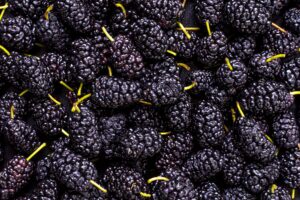Recently, Tom Hunt, the owner and manager of the Mohican Preservation Arboretum, informed me that we are nearing the end of pawpaw season.
This year, pawpaw emerged early, but Hunt noted that the drought did not impact fruit production.
From September 13 to 15, the Ohio Pawpaw Growers Association celebrated the 26th annual Pawpaw Festival at Lake Snowden, located near Albany in southeast Ohio.
Last year's festival attracted nearly 10,000 visitors. The pawpaw is the largest native fruit, with the record for the largest one weighing in at 1.25 pounds. Typically, pawpaw fruits range from 0.7 ounces to 18 ounces.
This festival is regarded as one of the largest in the nation, bringing together attendees from various states. One of the highlights was the delicious pawpaw-inspired culinary creations.
The 2023 Pawpaw Cook-off was won by an Arkansas couple, Meghan and Matt Feyeraband, who own Pure Joy Ice Cream. They crafted a delectable pawpaw caramel sauce to complement their ice cream.
“We produce a wide range of pawpaw products, making this festival a fantastic platform not only for sales but also for learning more about growing pawpaw,” Feyeraband shared.
As I’ve reported, pawpaw has a diverse flavor profile, reminiscent of melon, banana, mango, kiwi, custard, tapioca, or concord grape. This diversity is one of the most compelling reasons to attend next year’s festival.
Starting pawpaw seeds can be a bit tricky. Recently, I consulted a pawpaw expert who shared some unconventional tips for successfully germinating seeds.
The initial step involves providing adequate shade and subjecting the seeds to a cold, moist stratification process lasting between 60 to 100 days. Typically, seeds are planted in tall tree containers, which you will eventually need.
A unique recommendation is to plant five to ten seeds in these containers rather than just a single one. Cold stratification can conveniently occur in your refrigerator’s crisper drawer at temperatures between 32 to 40 degrees Fahrenheit.
To begin, place your seeds in a Ziploc bag with moist—but not wet—sphagnum peat moss, paper towels, sand, or potting soil. Keep the seeds in the refrigerator for 70 to 100 days, checking weekly for any signs of fungus.
After the required cold period, the seeds can be soaked in warm water for 24 hours to break dormancy before planting them in the ground or nursery containers.
My expert friend reported a remarkable success rate, with 100% germination when he clusters seeds together in moist paper towels.
Pawpaw seedlings typically sprout within one to two months of germination. Expect the initial growth to be slow for the first two years as the plant focuses on root development.
Incorporating pawpaw into your diet, whether fresh or frozen, can be highly beneficial due to its substantial health advantages.
Pawpaw is genetically related to the tropical papaya. Its flesh contains several essential nutrients found in the pulp, while the seeds, skin, leaves, bark, and roots also have nutritional value, though the latter can be toxic if misused.
Here’s a brief overview of some health benefits associated with pawpaw. Consuming the fruit and leaf oils in small amounts may help alleviate inflammation and pain associated with arthritis.
Squeezing yellow pawpaw leaves into a glass of water and drinking it three times a day has been said to aid in treating jaundice and malaria fever. Similarly, pressure from green leaves in water can benefit individuals suffering from diabetes-induced hypertension and constipation when taken three times daily.
To treat intestinal ulcers, cube a large unripe pawpaw fruit—seeds and skin included—and soak it in five cups of water for four days.
Inhaling the smoke from dried leaves can provide relief during asthma attacks. The milky sap from unripe fruits, which contains papain, can be used for chronic wounds or ulcers.
Boiling the pawpaw root and consuming half a glass of the water daily or chewing tender root pieces may help alleviate bronchitis symptoms.
These are just a few of the many uses for pawpaw.
For centuries, Native Americans have utilized this tree in numerous ways, and research by Sloan Kettering is ongoing to explore its potential in addressing cancer-related issues.
However, a word of caution comes from Memorial Sloan Kettering Cancer Center in New York.
They have warned of a toxin known as annonacin that may cause vomiting or severe nerve damage. Therefore, it is important to treat the skin and seeds of the pawpaw as mildly toxic and to research their effects on an individual basis.
Despite this, Native Americans have safely used pawpaw for generations.
I hope everyone enjoys wandering through their gardens and assessing how they fared this season. If you encounter any challenges, feel free to reach out to me at [email protected]. I'll do my best to assist you.
I plan to convert this column into a blog soon and link it to my website, www.ohiohealthyfoodcooperative.org. Thank you for being a part of this column.






